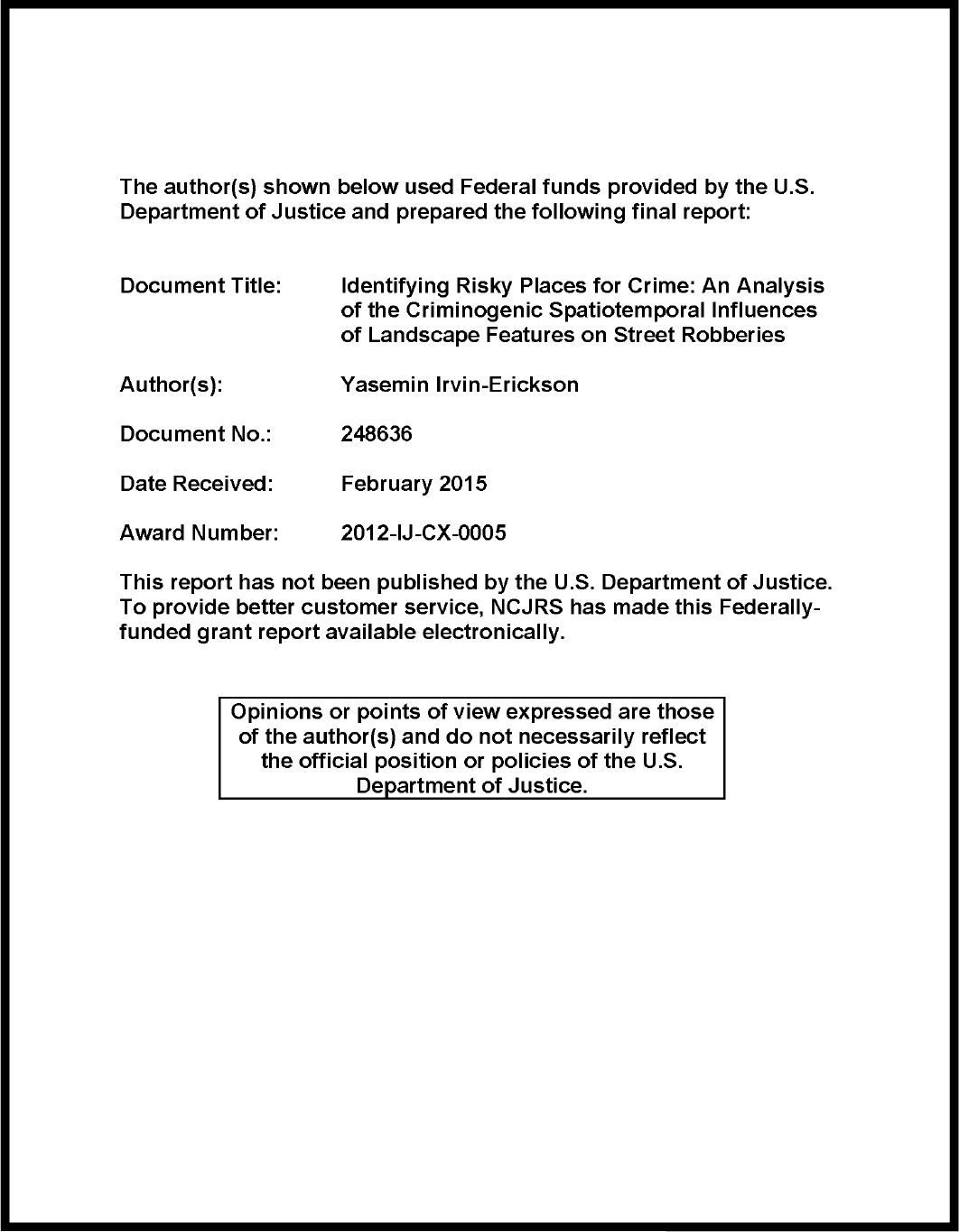
In environmental criminology, it is widely accepted that crime risk is affected by the legitimate and illegitimate activities hosted at places. Most studies exploring this influence use the concepts of environmental criminology to explain how landscape features (such as cash businesses, illegal markets, etc.) can promote criminal behavior. However, studies based on place-based indicators provide an incomplete picture of crime emergence. To address these limitations, this dissertation examined the individual and combined criminogenic spatiotemporal influences of landscape features on 2010 street robbery risk in the City of Newark, N.J., using the principles of Risk Terrain Modeling. The findings of this study showed that when certain features have criminogenic spatial influences, the extent and weight of their influence can vary at different times. The findings of the study also showed that the combined criminogenic influences of landscape features affect the robbery risk significantly. Based on these findings, focusing on spatiotemporal crime prevention programs is suggested as the most efficient way to target street robberies. Especially in urban cities like Newark with high frequencies of street crimes and a large geography to cover, the police departments are in desperate need of accurate and on-the-fly intelligence to channel enforcement efforts with limited personnel, limited technology, and limited resources. The prevention of street crimes including street robberies requires knowing which micro places are the riskiest for the crime problem at hand for what reasons, and tailoring the crime prevention efforts to the specific needs at those problem places.
